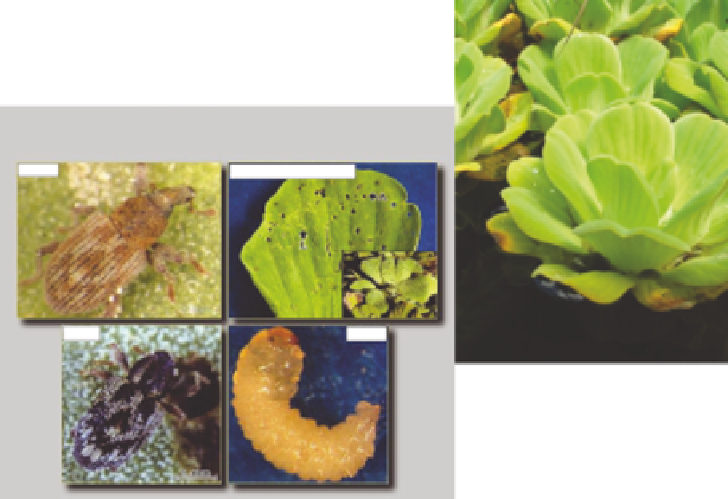Environmental Engineering Reference
In-Depth Information
Adult
Adult and larval damage
1 mm
Adult
Larva
2 mm
UGA5163013
(b)
(a)
FIGURE 17.16
(a) Water lettuce weevil. (
Neohydronomus afinis
) (Courtesy of U.S. Army Corps of
Engineers Aquatic Plant Control Research Program.) (b) Water lettuce plants. (Photo from Forest and Kim
Starr, U.S. Geological Survey, bugwood.org.)
•
Maximizing “bites per hour”
•
Maximizing the number and size of trophy ish
•
Providing ishing opportunities for a particular ish species or strain that is unique and
desirable
•
Providing ishing opportunities for “wild” ish
•
Maximizing the diversity of ishing opportunities
•
Providing a relatively pristine, natural, and undisturbed environment for ishing
•
Maximizing the ease and convenience of ishing
•
Providing edible ish, with little or no health risk from bioaccumulated toxic substances
The maximization of sustainable yields of speciic species is based on speciic habitat require-
ments, reproductive patterns and requirements, and feeding habits and requirements. Baker et al.
(1993) discuss each of these as well as management concerns for a number of target ish species
(including largemouth, smallmouth, and spotted bass; sunish and crappie; striped and white bass;
bullheads and catish; walleye and yellow perch; pike, pickerel, and muskellunge; trout and salmon;
and threadin shad, gizzard shad, and alewife).
As described by Lackey (2005), to support that “ish” it is necessary to manage the “ishery,”
which includes the management of the aquatic biota, the aquatic habitat, and the human users of
these renewable resources, each of which inluences how the ishery performs. So, managing sedi-
ments, algae, and aquatic plants, discussed previously, is also critical to isheries management, since
sedimentation can impact habitats and algae and aquatic plants prove the base of the food chain. In
addition, aquatic plants provide habitat and cover (such as escape cover). Currently, ish manage-
ment is based on species and habitat protection (Lackey 2005), based on the principles of lake ecol-
ogy as well as ish biology and population dynamics (Baker et al. 1993).
Fisheries management strategies may differ between large lakes and reservoirs. For example,
reservoirs may provide more opportunities for management, since they have outlet controls that may



Search WWH ::

Custom Search